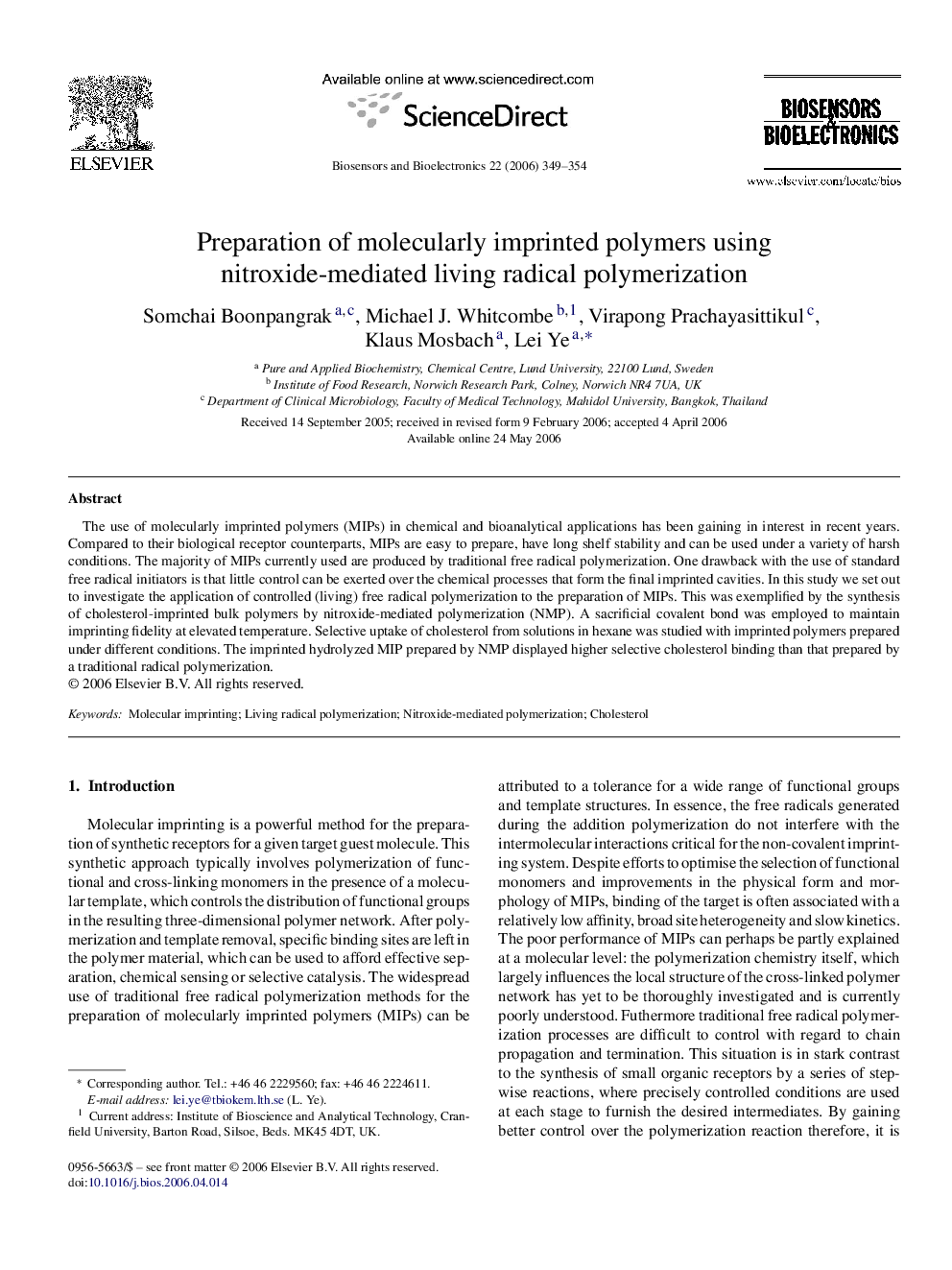| Article ID | Journal | Published Year | Pages | File Type |
|---|---|---|---|---|
| 869705 | Biosensors and Bioelectronics | 2006 | 6 Pages |
The use of molecularly imprinted polymers (MIPs) in chemical and bioanalytical applications has been gaining in interest in recent years. Compared to their biological receptor counterparts, MIPs are easy to prepare, have long shelf stability and can be used under a variety of harsh conditions. The majority of MIPs currently used are produced by traditional free radical polymerization. One drawback with the use of standard free radical initiators is that little control can be exerted over the chemical processes that form the final imprinted cavities. In this study we set out to investigate the application of controlled (living) free radical polymerization to the preparation of MIPs. This was exemplified by the synthesis of cholesterol-imprinted bulk polymers by nitroxide-mediated polymerization (NMP). A sacrificial covalent bond was employed to maintain imprinting fidelity at elevated temperature. Selective uptake of cholesterol from solutions in hexane was studied with imprinted polymers prepared under different conditions. The imprinted hydrolyzed MIP prepared by NMP displayed higher selective cholesterol binding than that prepared by a traditional radical polymerization.
